A decade on from the first release of European bison in the Southern Carpathians, two new groups have just arrived in the landscape. The animals will support further population growth and enhance genetic diversity, amplifying the positive climate, biodiversity and community impact of this iconic keystone species.
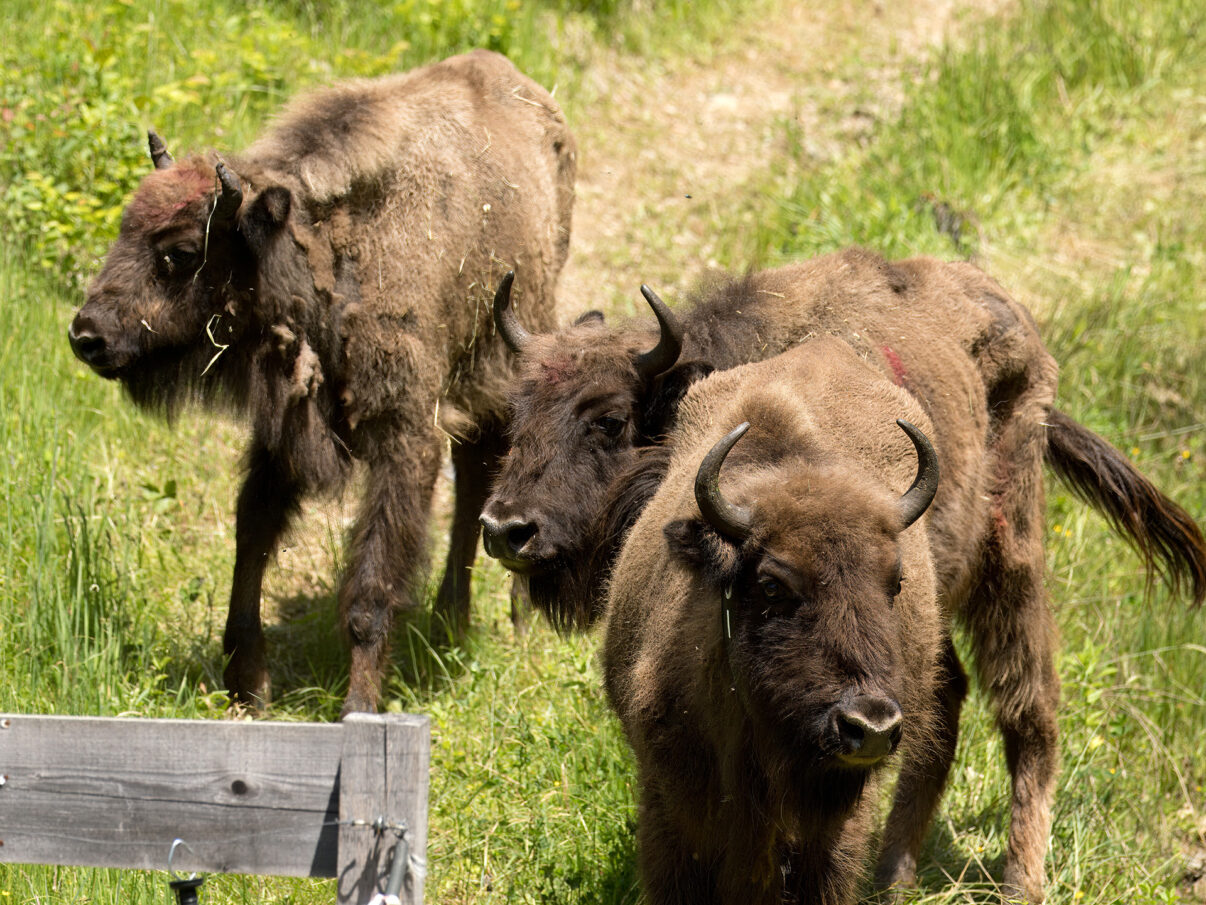
Milestone translocations
Two groups of European bison totalling 14 animals have arrived in the Southern Carpathians rewilding landscape in Romania. The first group of 10 animals was translocated from four breeding centres in Germany – Kiel, Sababurg, Wielburg, and Donaumoos. The second group of four animals was translocated from the Avesta breeding centre in Sweden. The bison will be allowed to acclimatise in a purpose-built enclosure before being released into the wild, where they will join the bison herds already roaming free in the landscape.
Bison reintroduction efforts in the Southern Carpathians began 10 years ago. Between 2014 and 2023, Rewilding Europe and WWF-Romania translocated 99 European bison to the Țarcu Mountains – a part of the Southern Carpathians rewilding landscape where no wild bison had roamed free for at least 250 years. With the population in the landscape now thriving, it currently comprises at least 190 individuals, including the newly arrived animals. These latest translocations will further enhance the genetic diversity of the existing population, which is already the largest of its kind in Romania, and support further growth.
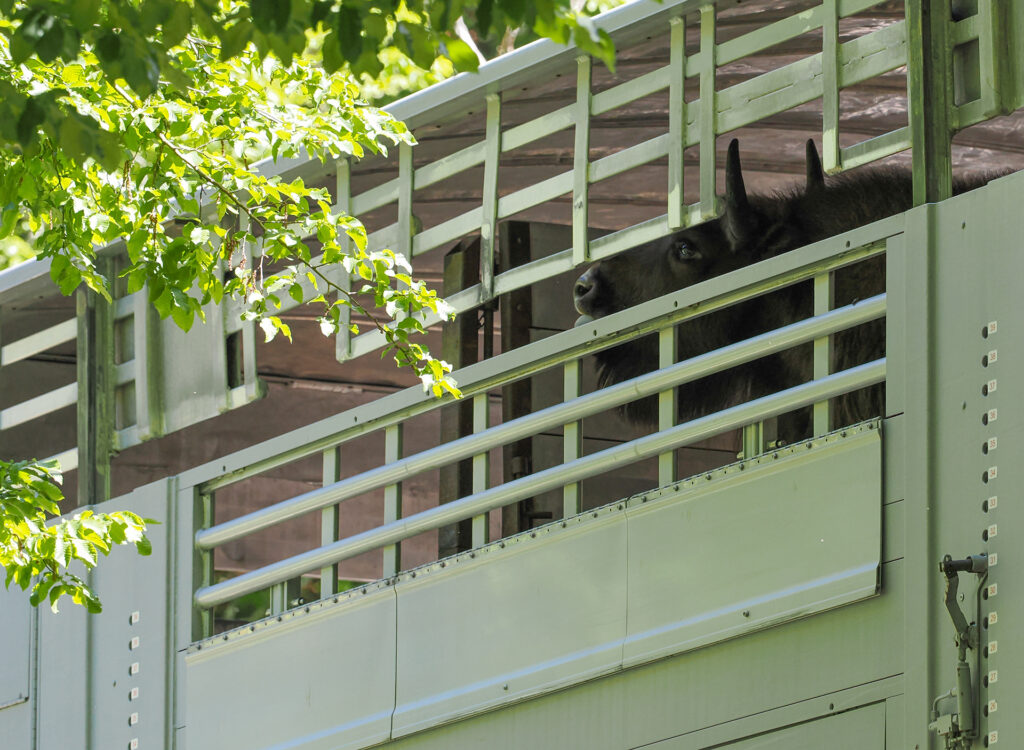
Towards genetic viability
Accounting for births and deaths, approximately half the total population of bison in the Țarcu Mountains has now been born in the wild. The range of the bison population is also steadily increasing, and is now estimated to be around 370 square kilometres – the fastest range expansion of any reintroduced European bison population. This can be attributed partly to the fact that the animals receive no supplementary feeding, as is the case with a number of other free-roaming European bison populations.
For a bison population to become genetically viable, it needs to reach 150 mature, breeding individuals, which means a total population of around 350 to 400 animals. If the population in the Southern Carpathians continues expanding at a similar rate, it is estimated that it will number between 350 and 450 individuals by 2030.
Taking bison recovery to the next level

Collectively, the two new bison groups represent the first release of European bison carried out under the LIFE with Bison initiative, which is taking bison rewilding efforts in the Southern Carpathians to the next level. Through the initiative, Rewilding Romania, WWF-Romania, and a range of partners will ensure that the growing European bison population and people who live in the landscape can live alongside each other in a balanced and positive way, and that local communities continue to benefit financially from the return of this iconic species, through the area’s burgeoning nature-based economy.
The Rewilding Romania and WWF-Romania teams are aiming to create a National Action Plan for bison management in Romania, and are contributing to the development of so-called “bison-smart communities” in the landscape. In addition to measures designed to build and maintain positive relations between people and bison – which include community outreach and ranger patrols – Rewilding Romania and WWF-Romania continually monitor the health of the free-roaming bison herds which comprise the overall population.

Good for biodiversity and climate…
Today, the European bison continues to make a remarkable comeback in Europe. As a keystone and flagship rewilding species, it has the potential to be both a biodiversity and climate hero. Through their grazing, foraging, trampling and fertilising, bison help to maintain biodiversity-rich mosaic landscapes of forest, scrub, and grassland – such as those found in the Southern Carpathians – as well as numerous micro-habitats, which host a wide range of plant and animal species.
These same interactions promote the capture of atmospheric carbon in both vegetation and the soil, with carbon also stored in the bodies of the bison themselves. The positive climate impact of European bison in the Southern Carpathians was recently underlined in a new modelling study by the Yale School of the Environment, which has yet to be peer-reviewed.
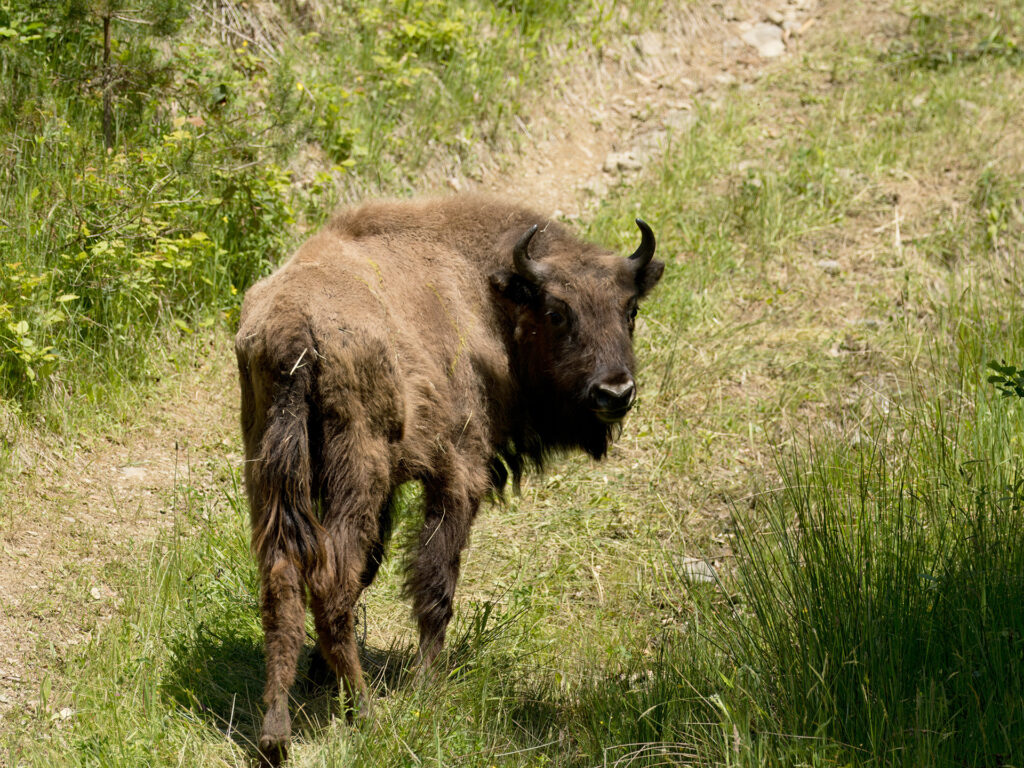
…and good for local communities too
The Rewilding Romania team are working hard to engage local communities – to understand their needs, raise awareness of rewilding, and ensure that the recovery of nature delivers socio-economic benefits to as many people as possible. This, in turn, enhances human-wildlife coexistence, allowing species such as European bison to recolonise the landscape with as little human interference as possible. Through rewilding’s holistic approach, bison can become community heroes too.
As the bison population in the Southern Carpathians continues to grows, so its range and positive impact will increase too, with a herd of bison already crossing into Domogled-Valea Cernei National Park, with which Rewilding Romania has recently signed a partnership agreement.
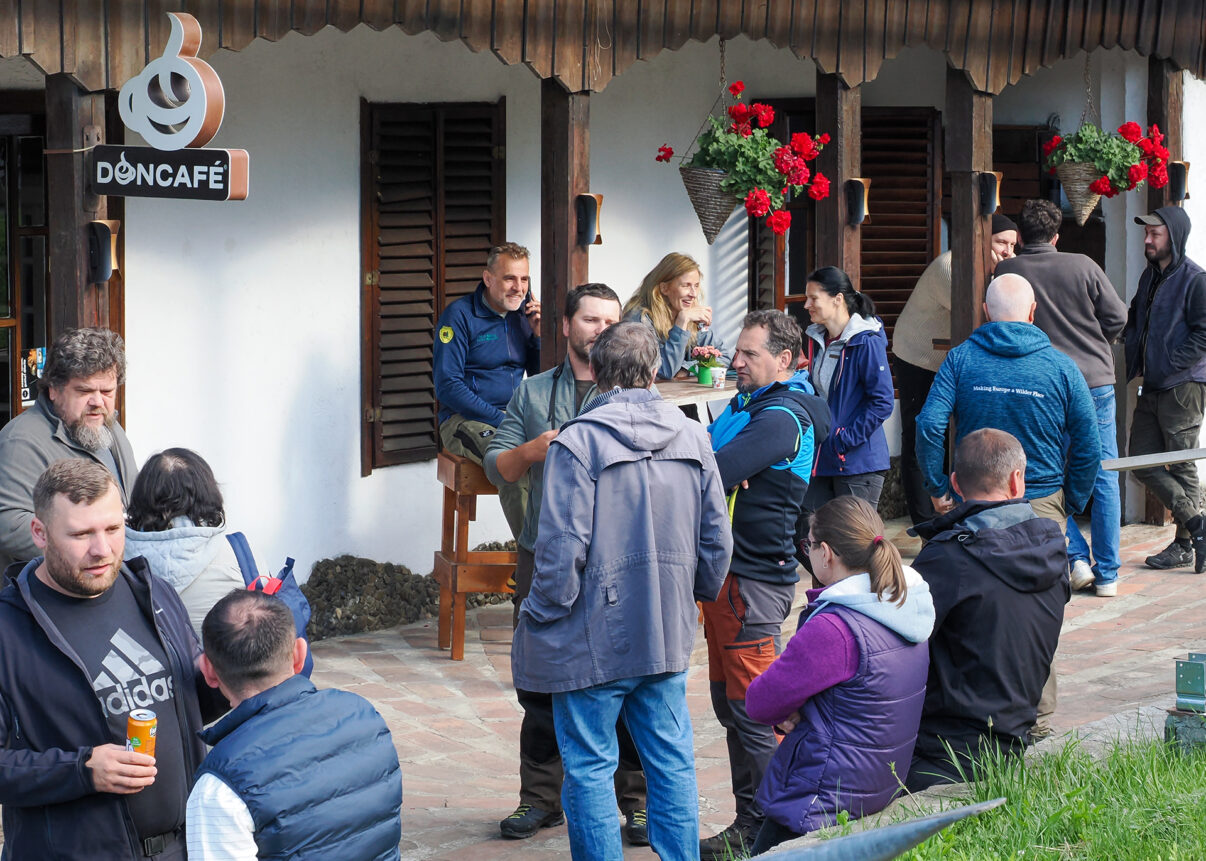
Invaluable support
Rewilding Romania’s work to support bison comeback in the Southern Carpathians is partially funded by a grant from the EU’s LIFE Programme. Rewilding Europe is providing co-funding, thanks to financial support from a range of partners, including Cartier for Nature, Fondation Ensemble, the Ecological Restoration Fund, the Dutch Postcode Lottery, WWF-Netherlands, and Arcadia. The support of these partners plays a critical role in enabling us to deliver and scale up rewilding impact.
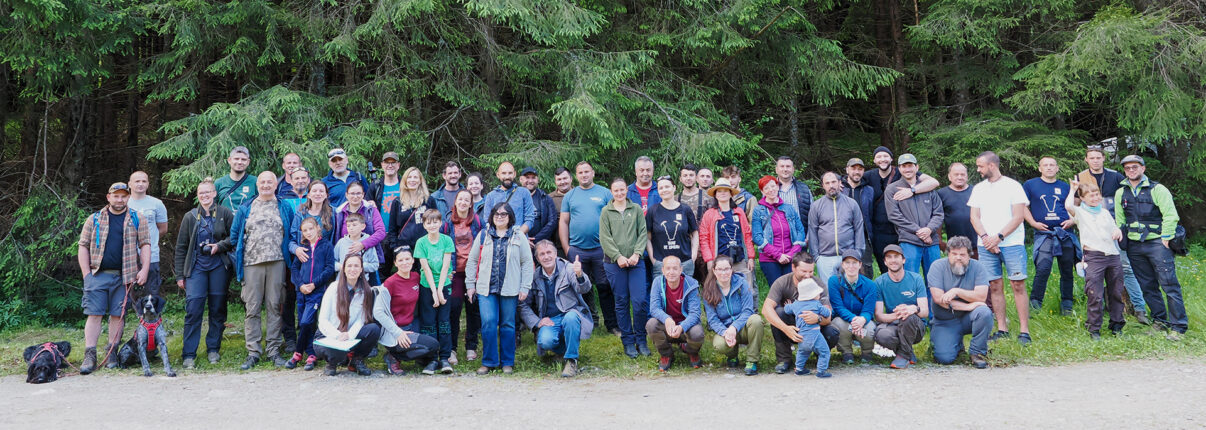
Want to know more?
- Rewilding of European bison in the Southern Carpathians
- The recovery of the European bison
- Watch “Zimbrul”: Emmanuel Rondeau’s documentary on people and bison in the Southern Carpathians
